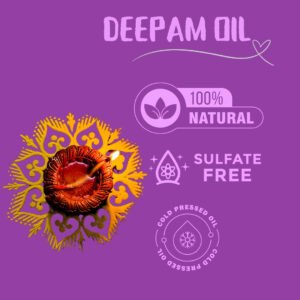Description
Historical Background of Kumkum and Vermilion
Kumkum, often referred to as vermilion, has a storied history that dates back to ancient civilizations. This striking red powder, derived primarily from the mineral cinnabar or through the use of turmeric, has been utilized for millennia across various cultures, particularly in the Indian subcontinent. Its origins can be traced to the Indus Valley Civilization, where it was used not only as a cosmetic but also held significant cultural and religious importance.
Throughout history, kumkum has undergone transformation in terms of its composition and application. In ancient India, the bright red color symbolized fertility, prosperity, and the divine energy of the goddess Devi. As time progressed, the use of kumkum expanded beyond mere cosmetics to serve as a vital element in religious ceremonies, rituals, and cultural celebrations. Its applications are particularly prominent in Hindu traditions, where it is applied to the forehead of worshippers and is used to adorn sacred idols, denoting auspiciousness and reverence.
The geographical variations in the production and use of kumkum are noteworthy. In some regions, it is made from natural materials, while in others, synthetic alternatives might be employed. The process of creating kumkum involves grinding specific pigments and combining them with ingredients such as lime or rice flour, which enhances the color and texture. This variation in production methods often reflects the local customs and available resources, further enriching the cultural tapestry of kumkum.
Historical figures and events have also played a pivotal role in popularizing kumkum. Legendary queens and warriors are often depicted wearing kumkum in traditional art forms, symbolizing power and femininity. The widespread adoption of kumkum in various religious rites across different communities underscores its integral role in both personal and communal identities, making it a vital cultural artifact that continues to be revered today.
Cultural Practices and Rituals Involving Kumkum
Kumkum, a bright red powder made from turmeric and lime, plays a significant role in various cultural practices and rituals across different communities. Its application often begins with daily religious routines, where individuals mark their foreheads as a sign of devotion during prayers and meditation. This daily ritual symbolizes the divine consciousness, reminding followers of the spiritual journey and the connection with the divine power.
In the context of community events and social gatherings, kumkum is frequently utilized during religious ceremonies, particularly in Hindu traditions. During special occasions, such as weddings, the application of kumkum is essential. It is commonly used to anoint the bride and groom, signifying their union and the blessings they receive from their families and deities. The act of applying kumkum to the forehead is considered an auspicious gesture that enhances the couple’s journey together, emphasizing the importance of fertility, prosperity, and harmony in their married life.
Furthermore, kumkum plays a vital role in various festivals celebrated across India, such as Ganesh Chaturthi, Navratri, and Diwali. During these festivities, kumkum is used to adorn idols, making them more vibrant and filling the atmosphere with spiritual energy. The red pigment not only represents fertility and prosperity but also signifies the power of Shakti, or feminine energy, which is revered in numerous cultural narratives.
The symbolic meanings attributed to kumkum extend beyond its physical application; it shapes social identities and perceptions of femininity. In many cultures, the application of kumkum is associated with womanhood and marital status. Thus, its usage fosters a unique bond among women, creating a shared sense of identity and community, accentuating the important role of women in cultural and spiritual practices. Personal testimonials often reveal profound connections with kumkum, shedding light on its significance in their lives and the intricate tapestry of traditions that is woven around its use.








